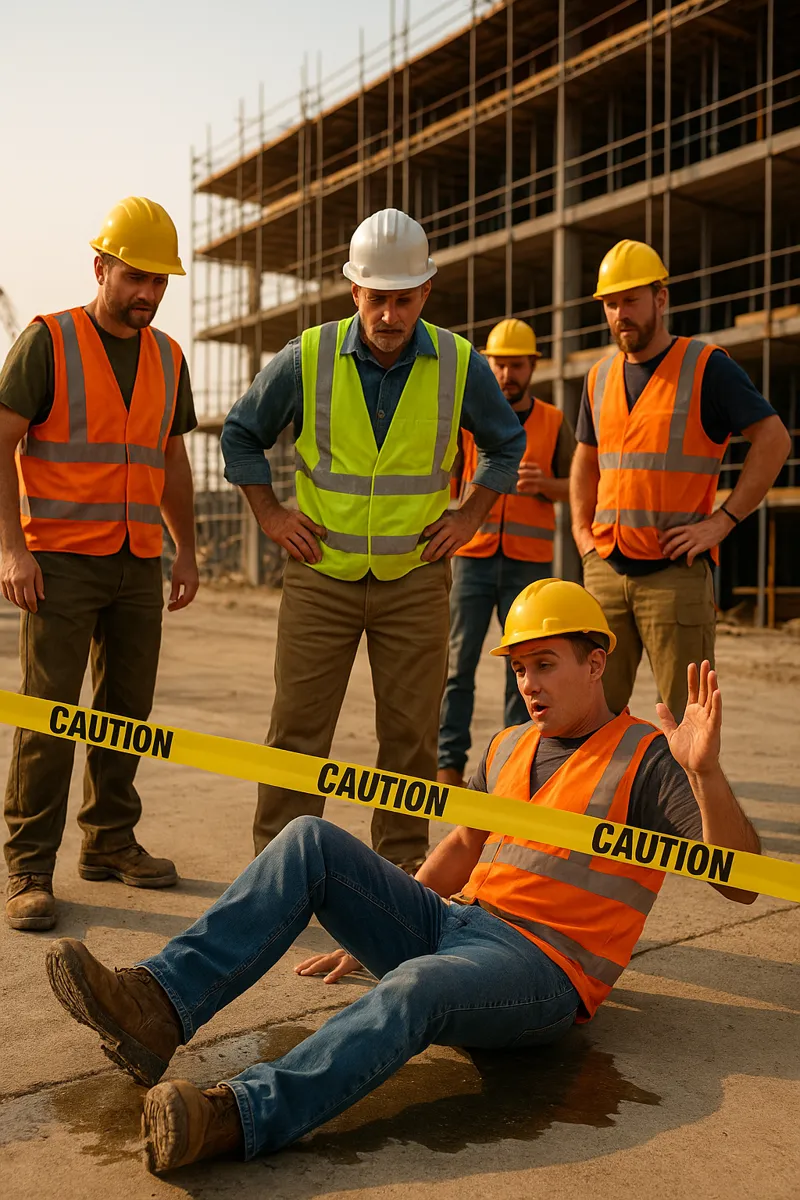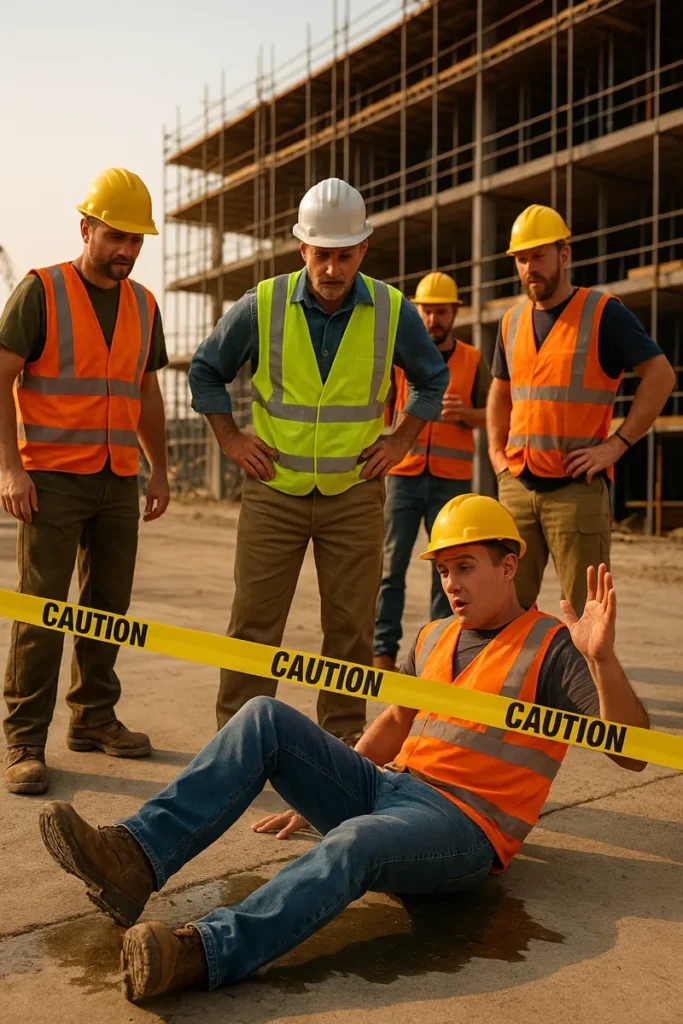Let me paint you a picture: You’re on-site, it’s pushing 30 degrees, the foreman’s breathing down your neck, and some poor bugger just slipped on an oily patch of concrete that should’ve been ripped out years ago. You know the kind – crusty, cracked, smells like regret and wet socks. As a waterproofer who’s been knocking around the North Shore and the odd job up the Northern Beaches, let me tell you – a solid epoxy floor could’ve saved that bloke’s pride and probably a few thousand in injury claims.
I’ve been in the game long enough to know that epoxy flooring isn’t just for looking pretty in fancy garages. Nah, this stuff’s tough, practical, and downright brilliant when it’s done right – which, let’s face it, isn’t always the case with some of the cowboys out there. But when it is done right, epoxy flooring can completely transform a commercial space—functionally, aesthetically, and safety-wise.
So if you’re a builder, waterproofer, tiler, or just a DIY tragic with a thing for smooth finishes, here are four effective uses for epoxy flooring in commercial setups. No fluff, just the good oil from a bloke who’s sealed more concrete than he’s had hot dinners.

1. Mechanical Workshops & Industrial Units – Where the Rubber Hits the Resin
Mate, I’ve worked on my fair share of mechanic’s sheds and factory floors. You walk into one of these joints and it’s chaos—grease spills, dropped tools, weld sparks flying, and forklifts that weigh more than your missus’ Prado. If the floor can’t handle it, you’re looking at a maintenance nightmare or worse, someone slipping a disc.
This is where epoxy flooring shines. Or should I say, cures beautifully.
You want a system that’s abrasion-resistant, chemical-resistant, and can handle point loads like it’s nothing. I’ve laid down 100% solids epoxy with a quartz broadcast layer more times than I can count in industrial jobs. I usually recommend:
- Anti-slip aggregates in areas with oil or coolant spill risk
- High-build trowel-applied screeds in zones that see heavy wheel traffic
- Moisture barrier primers first – because we know how Aussie humidity loves to sneak under slabs
💬 My take? If you’re not putting epoxy in a commercial workshop, you’re just setting yourself up for callbacks and patch-up jobs. It’s bulletproof, looks sharp, and the clients love how easy it is to clean up at the end of a shift.
2. Commercial Kitchens & Food Prep Areas – Safe, Sanitary, and Tough as Nails
Now, as a waterproofer, kitchens are my second home. Greasy floors, busted tiles, dodgy silicone joints – I’ve seen some horrors. But epoxy, done right, turns a grubby food prep zone into a five-star hygiene setup.
Commercial kitchens are full of rules: slip ratings, food safety compliance, chemical resistance, you name it. You need a floor that meets AS 4674 (Aussie Food Premises and Equipment Code), and epoxy is the easiest way to tick every box.
My go-to setup for these areas:
- Food-safe epoxy coatings – certified for commercial food environments
- Cove base edging – for seamless transitions up the wall, no grub catching grout lines
- Textured finish – because a chef on his backside isn’t a great look
- Quick-cure topcoats – for those tight weekend turnarounds when the kitchen can’t close
💬 Personal opinion? Epoxy in kitchens is a no-brainer. I did a Thai restaurant in the city once – kitchen floor was a trainwreck. Couple of days later, epoxy went in with full non-slip specs and coving – bloke rang me a year later just to say it was still spotless. That’s a proud tradie moment right there.
3. Retail and Showroom Floors – Looks Flash, Works Hard
You might be thinking, “Retail? Epoxy?” Yep. And it’s not just for industrial grey floors either.
Epoxy can be downright sexy when you want it to be. I’m talking metallic finishes, coloured flakes, even mirror-gloss topcoats that’ll make the floor pop more than the designer handbags on display. I’ve laid epoxy in showrooms, cafes, boutique gyms – even a hair salon once, don’t judge.
What makes it ideal for retail is:
- Durability – Handles foot traffic like a champ
- UV-stable polyurethane topcoats – Stops it yellowing in shopfront sunlight
- Dust-proofing – No more grubby concrete powder coating your stock
- Design versatility – You can match brand colours or make a statement
💬 One of my favourite jobs was a small high-end shoe store in the Northern Beaches. They wanted something sleek, modern, and easy to mop. We did a gunmetal grey metallic epoxy with a satin finish. Client was over the moon—and the shoes looked damn good on it too.
4. Health Clinics, Labs & Clean Zones – Seamless and Sterile
Now we’re getting into the meticulous stuff. Epoxy really earns its stripes in medical centres, labs, and clean rooms. No joins, no grout lines, just one big continuous surface that’s easy to sterilise and impossible for bacteria to hide in.
From a waterproofer’s view, this is chef’s kiss territory. The floor needs to tie into the wall like it’s one big waterproof membrane, and epoxy with proper cove detailing does that better than anything else. I also throw in a conductive epoxy layer if they’ve got sensitive electronics in the room.
Specs I aim for:
Antimicrobial epoxy resins – some even have silver ion additives for extra bacteria-killing power
- Antistatic (ESD) epoxy – for server rooms and labs
- Low VOC systems – so you don’t gas out the staff
- Soft matte finish – glare reduction in bright rooms
💬 I did a private dental clinic in St Leonards where hygiene was top of the priority list. We pulled out the vinyl that was bubbling like a pancake and replaced it with a seamless, antibacterial epoxy system. Three years on, it still looks fresh and the owners haven’t had a single complaint from patients—or the health inspector.
From the Toolshed: What Makes a Good Epoxy Job?
Alright, here’s where the rubber meets the road.
Prep is king. I don’t care how good the resin is—if you slap it on dusty concrete, it’s coming off faster than your stubby shorts on a 40-degree day. I always:
- Diamond grind the surface
- Test for moisture (you’d be shocked how many slabs trap water vapour)
- Prime with a compatible base
- Allow full cure times – no shortcuts if you want it to last
I also work closely with my suppliers. Polyaspartics, cycloaliphatics, novolacs – yeah, it’s a chemistry jungle out there. But if you know your substrates, you’ll get a bulletproof result every time.
What About Luxury Homes?
Look, I don’t chase residential work. But once in a blue moon, someone in the Northern Beaches rings me up for something flashy—a polished garage floor, maybe a slick outdoor kitchen. And fair enough. Epoxy looks mint when paired with sandstone walls and ocean views.
In these cases, I treat the job like a commercial install with a dress shirt on:
- High gloss metallic epoxy for garages
- UV-resistant coatings for outdoor spaces
- Custom flakes or tints that match their home aesthetic
💬 It’s not about the money for me—it’s about doing a job I’m proud to point at. Even if it’s for a bloke who wears loafers and drinks almond milk lattes.
Final Thoughts (and a Cold Schooner)
If you’re a waterproofer like me—or just a proud tradie who gives a damn about workmanship—epoxy flooring is one of those things you should have in your arsenal. It’s not a shortcut. It’s not a gimmick. It’s just bloody good building science.
When your slab’s prepped right, your epoxy’s matched to the environment, and your finish is solid, you’ve just handed your client a floor that’ll outlast their lease—and maybe even their marriage.
So whether it’s a high-traffic workshop, a sparkling café kitchen, a sterile lab, or a boutique fashion store, epoxy doesn’t just meet the standard—it sets it.
Next time you’re on-site and someone’s tossing up tile vs vinyl vs epoxy, you know what to say:
“Mate, just epoxy it and forget it.”

